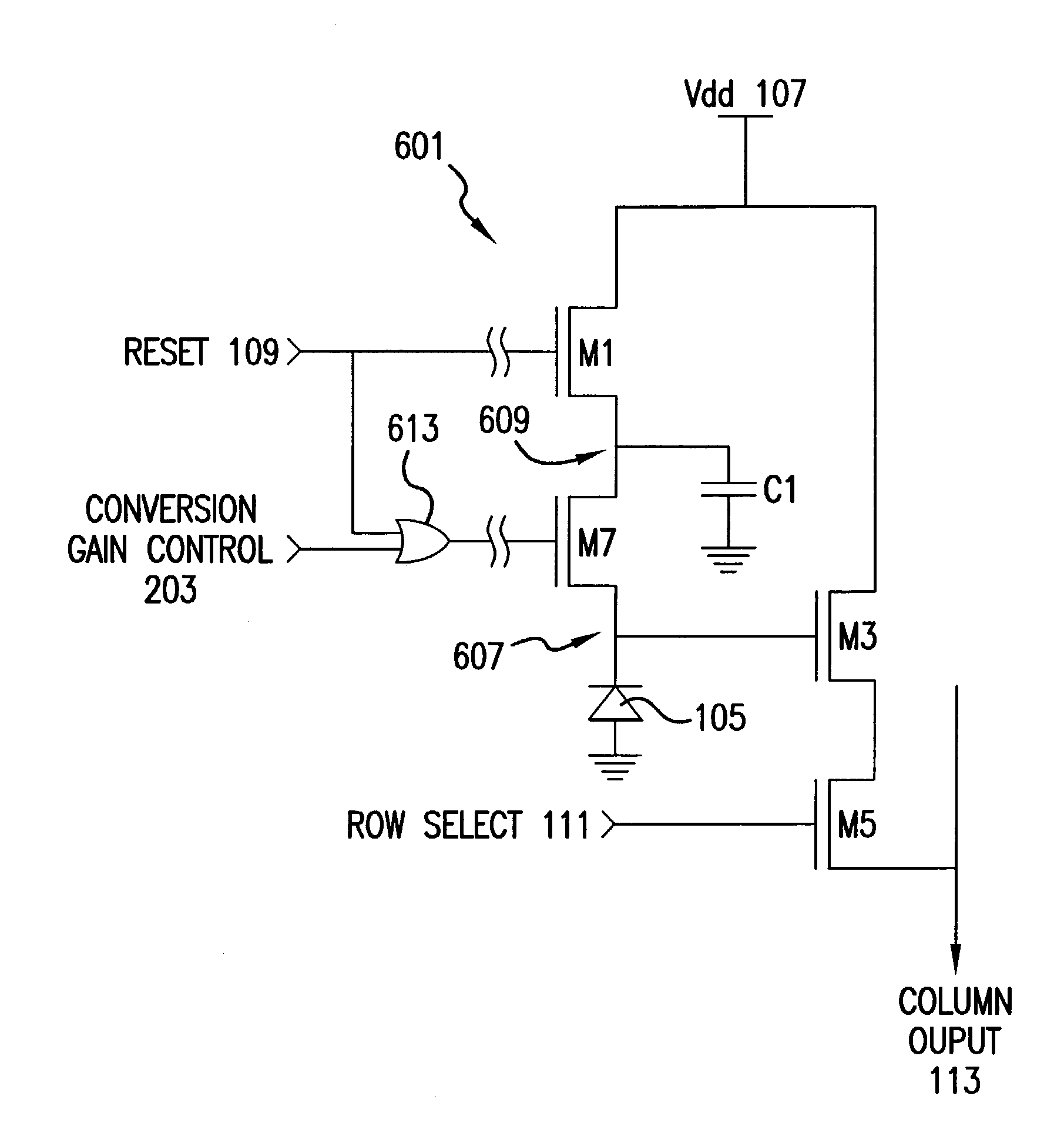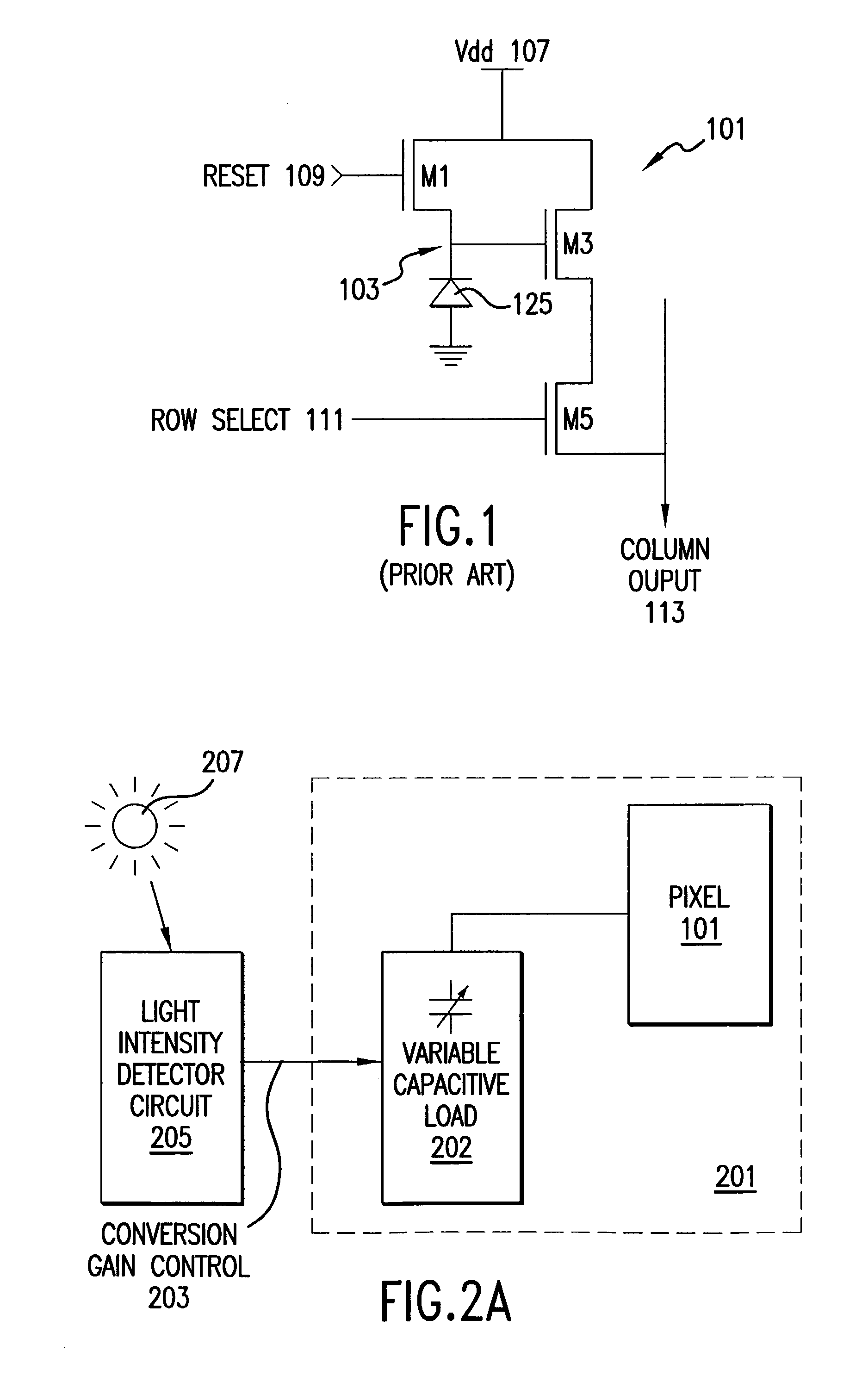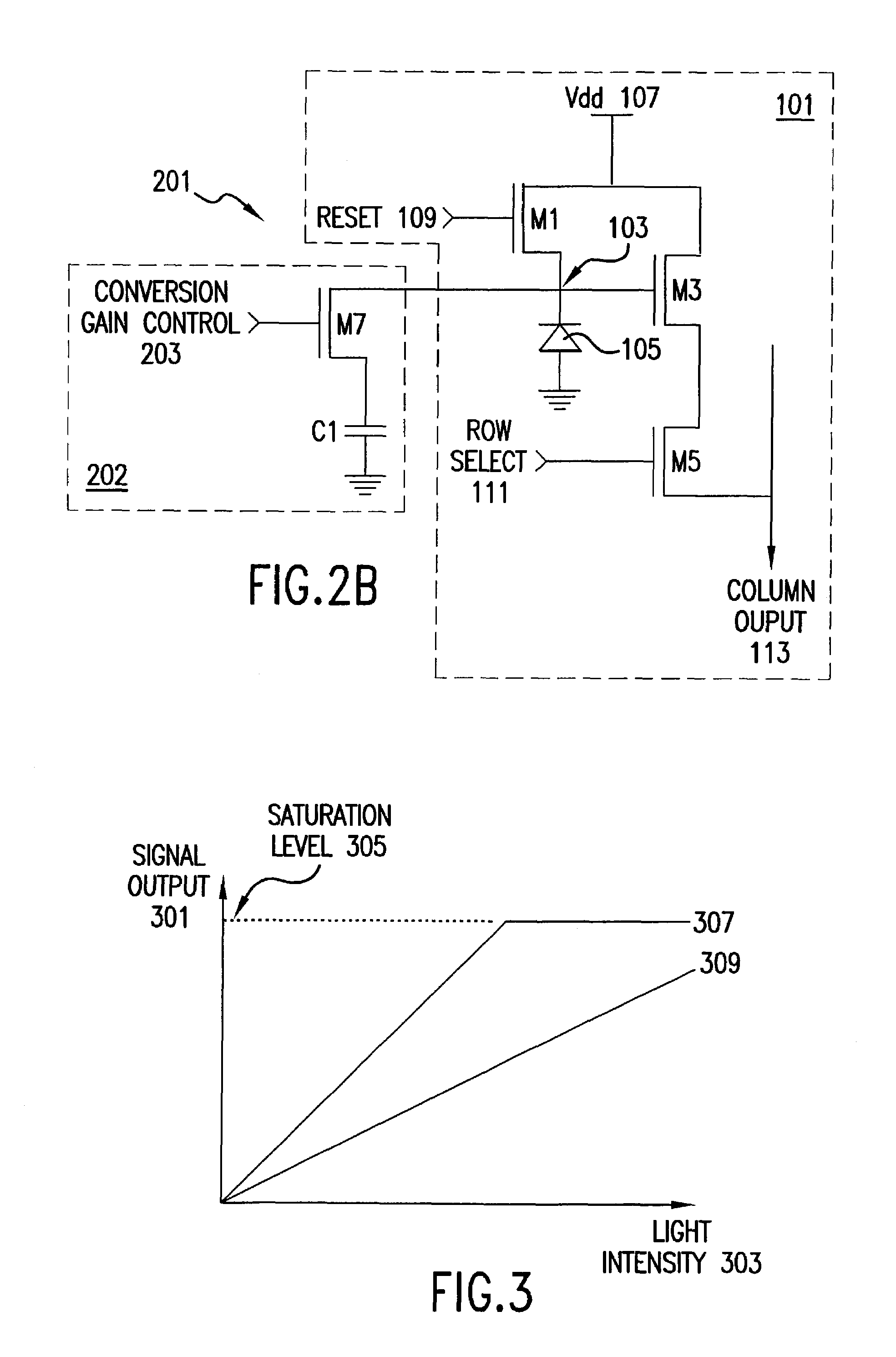CMOS image sensor with variable conversion gain
a technology of image sensor and conversion gain, which is applied in the field of cmos image sensor, can solve the problems of image overexposure, inability to reduce the exposure period below the flicker period, and the illumination level of the light source may vary over time, so as to prevent overexposure without reducing the exposure period, high conversion gain, and high light sensitivity
- Summary
- Abstract
- Description
- Claims
- Application Information
AI Technical Summary
Benefits of technology
Problems solved by technology
Method used
Image
Examples
Embodiment Construction
[0021]FIG. 2A shows a block diagram of a variable conversion gain pixel 201, in a preferred embodiment of the present invention. A pixel, such as the prior art pixel 101, is connected to a variable capacitive load 202. A light intensity detector circuit 205 (located outside the variable conversion gain pixel 201) senses the brightness of incident light 207, and outputs a conversion gain control signal 203 in response. The conversion gain control signal 203 adjusts the capacitance of the variable capacitive load 202 to compensate for the intensity of the incident light 207.
[0022]FIG. 2B shows the variable conversion gain pixel 201 of FIG. 2A in more detail. The pixel 101 is the same pixel shown in FIG. 1. The variable capacitive load 202 consists of a transistor M7 and a capacitor C1, and is connected in parallel with the photodiode 105. The transistor M7 connects the capacitor C1 to node 103 of the pixel 101. The gate of the transistor M7 is connected to the conversion gain control ...
PUM
 Login to View More
Login to View More Abstract
Description
Claims
Application Information
 Login to View More
Login to View More - R&D
- Intellectual Property
- Life Sciences
- Materials
- Tech Scout
- Unparalleled Data Quality
- Higher Quality Content
- 60% Fewer Hallucinations
Browse by: Latest US Patents, China's latest patents, Technical Efficacy Thesaurus, Application Domain, Technology Topic, Popular Technical Reports.
© 2025 PatSnap. All rights reserved.Legal|Privacy policy|Modern Slavery Act Transparency Statement|Sitemap|About US| Contact US: help@patsnap.com



